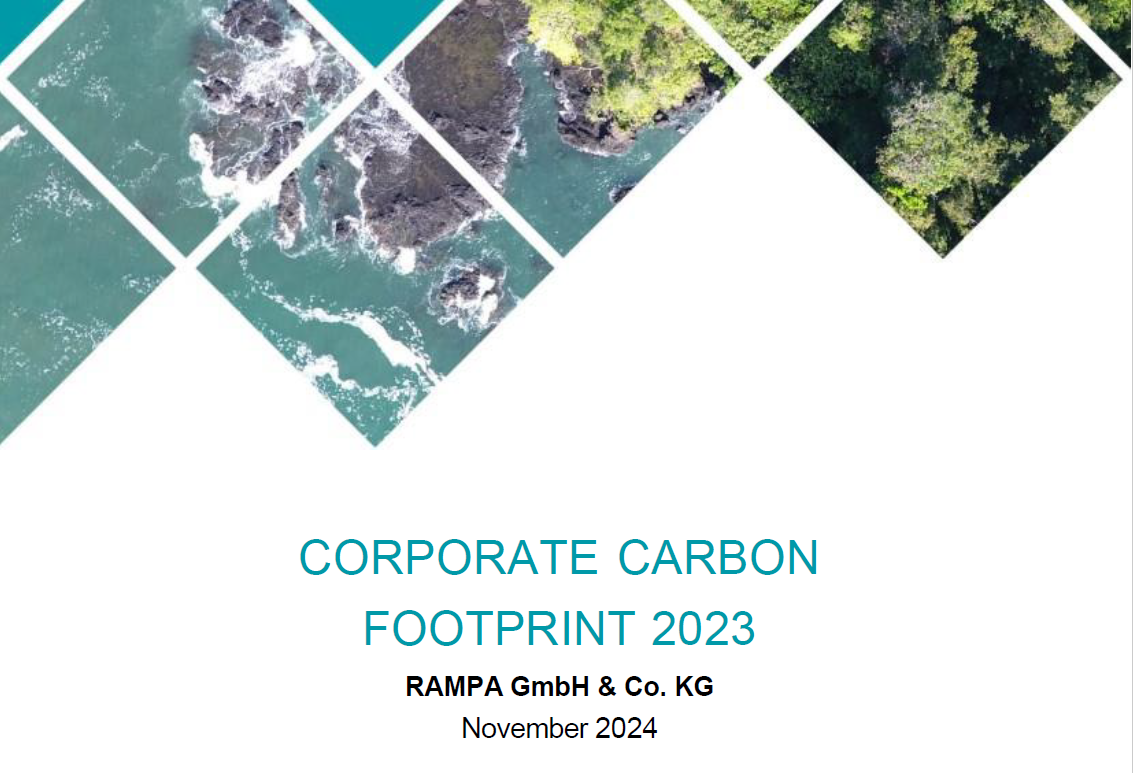
RAMPAs CCF - Corporate Carbon Footprint
At RAMPA, sustainability and being responsible towards our planet is not a passing fad or a current trend. Quite the opposite: RAMPA embraces the wide range of possibilities available and has for decades attached considerable importance to ensuring that the company’s processes are designed to be as environmentally friendly and sustainable as possible. There are several ways in which we do this, in line with our climate strategy, which we would like to tell you about in more detail.
RAMPA has embarked on the path towards a neutral carbon footprint! In this respect, we have already reached the first major milestones and developed further initiatives.
Climate neutrality essentially means that our corporate actions do not increase the amount of climate-damaging greenhouse gases in the atmosphere. RAMPA is especially focused on preventing the climate-damaging gases from being emitted by us.
To reduce and offset RAMPA’s operational CO₂ emissions* efficiently, we have our CO₂ footprint balanced by the experienced partner FORLIANCE based on the so-called Greenhouse Gas Protocol (GHG Protocol of the World Resources Institute and the World Business Council for Sustainable Development).
In accordance with the GHG Protocol, an organisation’s emissions may be divided into three areas, known as scopes. As a minimum requirement, the areas scope 1 and 2 are to be highlighted for the establishment of the Corporate Carbon Footprint. However, as RAMPA is not satisfied with this, further from scope 3 were accounted for.

Scope 1: This includes all emissions that arise directly in the company, i.e. from sources that the company either owns or directly controls (e.g. heating systems, vehicle fleet, air conditioning systems, etc.).
Scope 2: This includes all indirect emissions generated by the company’s energy supply (from external sources) (e.g. purchased electricity and thermal energy).
Scope 3: This includes all other emissions arising from the company’s activities but owned or controlled by a third party (e.g. transport, purchased goods and services, waste, business travel/commuting, etc.).

Below please find the detailed reports of the previous RAMPA climate assessments:
Measures based on the CO₂ balances
For emissions that we cannot currently avoid, we have decided to invest in high-quality climate protection projects, preferably those that remove carbon from the atmosphere in the long term and store it in natural systems. We offset 100% of the CO₂ emissions generated in Scopes 1 and 2 by investing in FORLIANCE's ‘CO₂OL Tropical Mix’ climate protection project. In the long term, we are working to further reduce the offset emissions.
CO₂OL Tropical Mix: Sustainable forestry and cocoa production in Panama
The CO₂OL Tropical Mix climate conservation project supported by RAMPA concerns the reforestation of land in Panama that has been degraded by livestock farming. 20 native tree species are being replanted and 30 others protected. The goal is to gradually restore and preserve mixed forests with a healthy forest ecosystem across the 13,385 hectare area.
The project promotes sustainable forestry in line with FSC (Forest Stewardship Council) guidelines and UTZ and EU organic certified cocoa production, which contribute significantly to the protection of biodiversity while improving the economic and social situation of the rural population. More than 150 new jobs were created with prospects, sustainable sources of income and fair working conditions. Additionally, integrated capacity building and environmental education programmes and support for local schools form an integral part of the project.
CO₂OL Tropical Mix is one of the first land use and forestry projects to be awarded the prestigious Gold Standard certification. The project has already offset a total of 3,379,220 tonnes of CO₂.
RAMPA's unavoidable greenhouse gas emissions from Scope 1 and 2 were fully offset as follows:

*In addition to CO₂ there are many other greenhouse gases, such as methane, which also significantly contribute to climate change. Since CO₂ is regarded as the best-known greenhouse gas, we refer to CO₂-emissions on our website in simplified terms (technically, we otherwise refer to CO₂– equivalents), whereby the term is synonymous with all climate-relevant emissions.








